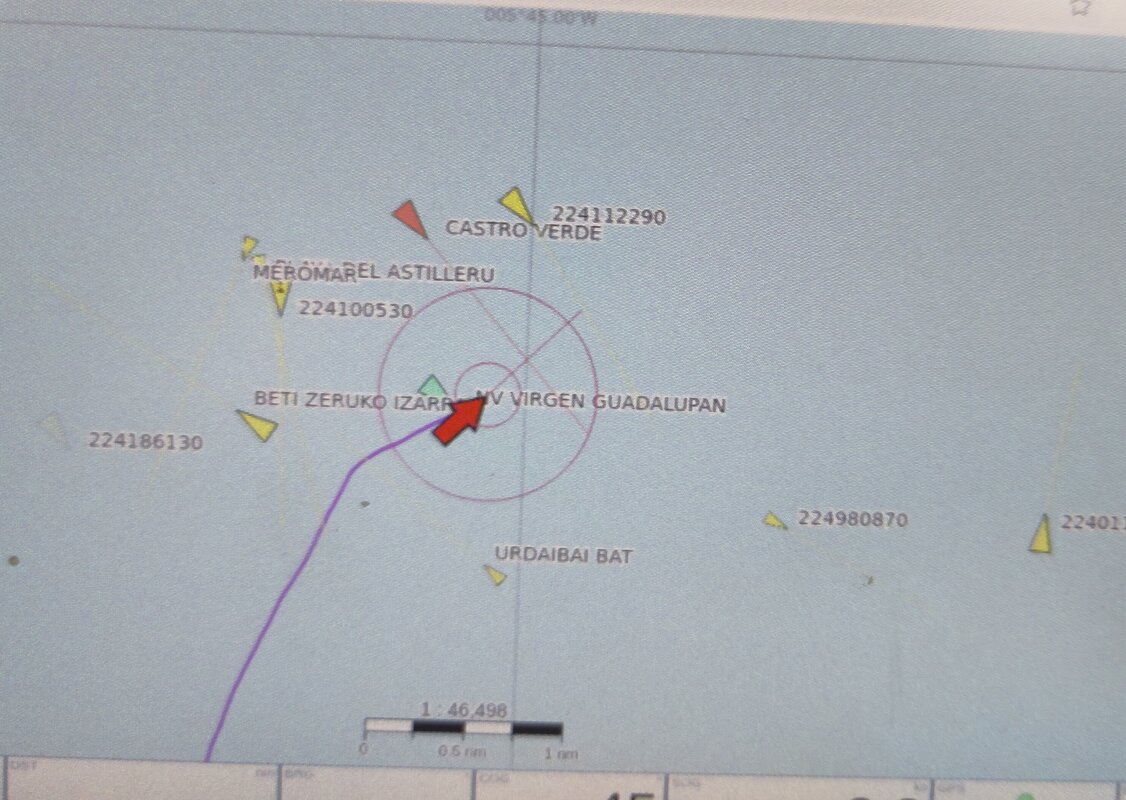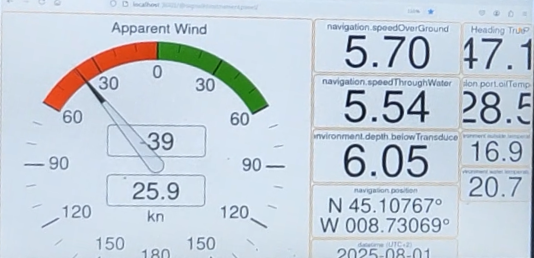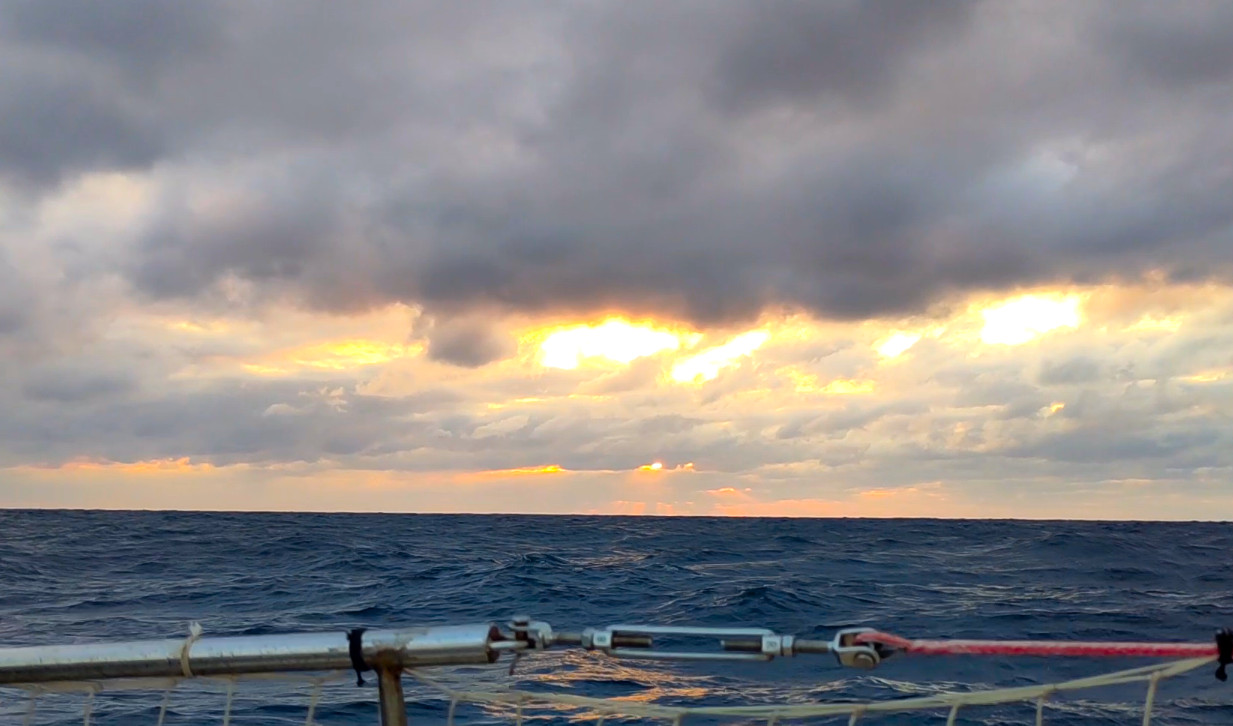⛵ Cedeira 🇪🇸 to Audierne 🇫🇷
Posted on July 31, 2025Track data available for this sailing hop.
Loading track map...
The Bay of Biscay. Every sailor has heard the stories - massive storms, ship-killing waves, the graveyard of countless vessels. After learning respect for the Atlantic along the Portuguese coast, and now waiting out persistent northerlies on the Galician coast, I was both excited and apprehensive. The forecast showed the Azores High extending into the Bay, bringing constant but manageable northerly winds. The window wasn’t perfect, but it knew what I’d get. Time to go.
The Spanish coast creates a wind acceleration zone - what might be 15 knots offshore becomes 20+ near the coast due to “compression” effects. Add in thermal effects that peak in the afternoon, and timing becomes critical. I chose a 1am departure, hoping to punch through this coastal wind acceleration before the afternoon thermal boost kicked in. The plan: get offshore fast, then deal with the rest.
Day one went to plan. Winds from 30-50° at 10-16 knots - perfect for staying on starboard tack and eating up miles northwest. Reached the main shipping lane that runs along the Bay’s outer edge by afternoon. This 20-mile-wide highway from Spain to the English Channel sees constant cargo traffic. Timing it right meant crossing in daylight - much easier to dodge the half-dozen ships that appeared during my transit.
First leg complete, I settled in to wait for the forecast wind shift to northwest. At 22:00, the wind went west and I tacked immediately - too eager, as it turned out. Within 30 minutes it veered to due north and stuck there for 14 frustrating hours. Now I was heading east - right back where I’d come from - making minimal northing. If these conditions persisted, I’d have to sail 60% farther to reach France. Not the Biscay crossing I’d planned.
Finally, at 11:00 on day two, the wind backed to northwest and I could point almost directly at Brest. A few hours later I noticed something odd on the chart: a border line between Spain and France running through the middle of the Bay. International waters get complicated out here.
The rest of day two was glorious - sunshine, steady 16-knot winds, perfect sailing. During a routine check I found 3.5 liters of freshwater in the bilge. Puzzling, since it was bone dry at departure.
Entering the second night, I stuck to my 15-minute sleep rotation, but exhaustion was building. At 04:20 a propper gust heeled the boat hard over, jerking me awake. The instrument showed 22 knots and I scrambled on deck to drop the genoa.
Day three brought me back to the continental shelf around 15:00, where depths plunge from 4,000 meters to a few hundred. The shelf edge was working hard - a massive fishing fleet of 20-30 meter trawlers dragging nets everywhere. Dodging them while preparing for the forecast weather took concentration.
I’d been expecting stronger conditions today and wasn’t disappointed. By 20:30, 25 knots arrived as advertised. I’d already swapped the genoa for the staysail and put the second reef in the main, but the combination just doesn’t work well on Niovi. She’ll only make 3-4 knots, and the autopilot struggles despite balanced helm. I motor-sailed at 800 watts to help the pilot cope with the building seas. The temperature plummeted to 14°C - coldest night in months.
I knew I’d reached France when my phone pinged with messages - civilization! But the approach was long, and the wind was backing against me. Exhausted from a night of pounding into steep seas, I abandoned plans for Brest and aimed for Audierne instead. Should have been one tack, but the wind went crazy - shifting, gusting, dying, returning. Three tacks later I finally dropped anchor.
I cracked open my last three non-alcoholic beers from Spain and toasted to 380 miles in just over three days.
Weather Conditions
- Wind: Day 1: NE 10-16 knots; Day 2: N then NW 16 knots; Day 3: NW 25+ knots
- Seas: <1.5m, then steep and aggressive on final night
- Weather: Cloudy/rainy at start and finish, beautiful clear middle section
Navigation
- Departure: Cedeira
- Arrival: Audierne
- Distance: 380 miles (704 km)
- Duration: 3 days and 8 hours
Notes
- Mystery bilge water: 3.5L fresh water, source unknown
- Staysail configuration works (barely) for heavy weather
- Equipment issues discovered:
- Aft lower shrouds leaking in rain
- Fridge shelves sliding on starboard tack
- Stove gimbal sticking on starboard tack
- Cockpit locker latch failing on port tack
- AIS CPA alarm resets every 30 seconds (maddening!)
Highlights
- Niovi’s upwind ability in challenging conditions confirmed
- No major equipment failures despite rough conditions
Photos
 Mid-Biscay entertainment
Mid-Biscay entertainment
 beating up the Bay
beating up the Bay
 The continental shelf edge - prime fishing grounds
The continental shelf edge - prime fishing grounds
 Final night conditions - 25 knots sustained
Final night conditions - 25 knots sustained
 Last sunset of the passage
Last sunset of the passage
Enjoyed this post? Never miss out on future posts by subscribing via RSS or email